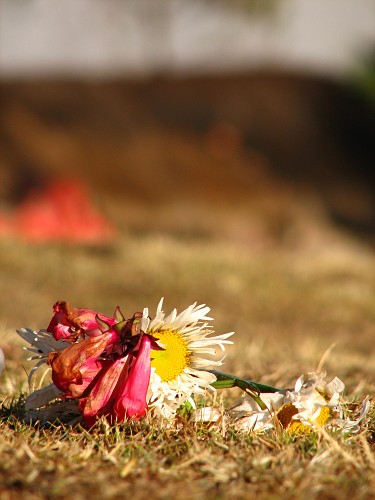a community service project sponsored by World Nomads
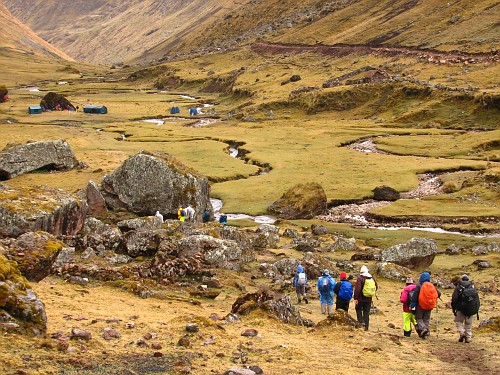
As we descend into the valley, I can’t help but feel like I’m strolling through a doctor Seuss picture book; it’s an awkward but fanciful arrangement of skinny trees with knobby tops, boulders sprinkled like bread crumbs from an earth-sized muffin, curlicue streams poured on the land like molasses, sheep and llamas dressed in perfectly color-coordinated camouflage, and little dashes of bright red, visible from infinite distances — climbing a hill, chasing a goat, tending to a field or trailing a cluster of other dashing red dots.

I don’t know what I expected of the Andes, but it is not until my descent into the valley that I realize my imagination would have been aptly challenged with the task of a preconceived vision as colorful, dimensional and whimsical as the one I’m witnessing. In between long sighs trailed off with adjectives whispered only to myself, Reality takes a full box of crayons and colors in the black and white image with which I came.
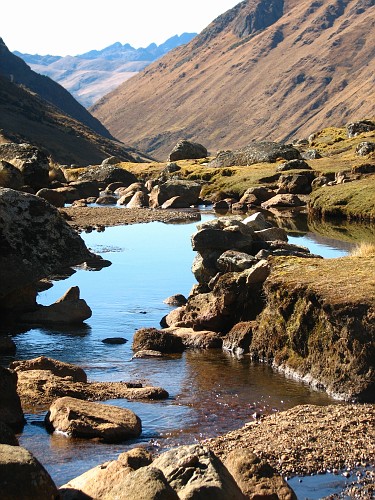
We arrive at the bottom of the valley where a particularly large cluster of small red dots has been pulling hair, investigating insects and poking at old body wounds in the boredom of our long-awaited arrival. Teachers quickly smarten the little bodies and limbs into erect and organized lines and set the step for a march towards our group. Each child is dressed, from hat to toe, in rainbows of home-woven clothing and accessories. Though each shawl took months of detailed attention by tremendously patient and skilled hands to create, the children are not dressed up for this occasion; this is their traditional dress, the same as what they wore yesterday and will wear, again, tomorrow.
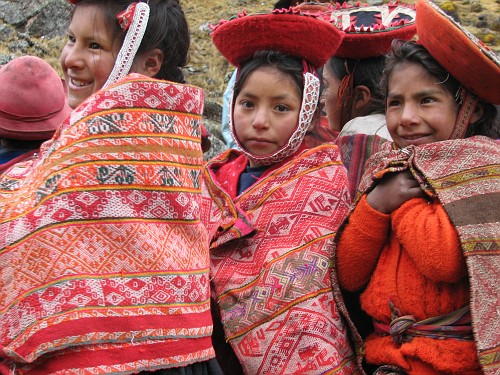
I am immediately shocked by the familiarity of the rosy mountain-pass-chapped cheeks and earth-toned and tough skin; apparent adaptations for those accustomed to living in close(r) quarters with the sun. I recognize many of their faces as fraternal twins to those I’ve encountered in the Himalayas of India, Nepal and Tibet and realize that they must be siblings in the family of those who have made for themselves the same home, on different continents, of great mountains.
Each child in the procession carries a white flower. The flowers were brought from the lowlands and their drooping faces, which evidence their exhaust from the distance they traveled, are a comic contrast to those of the children whose heads are upturned with expressions widened in excitement and unabashed curiosity.
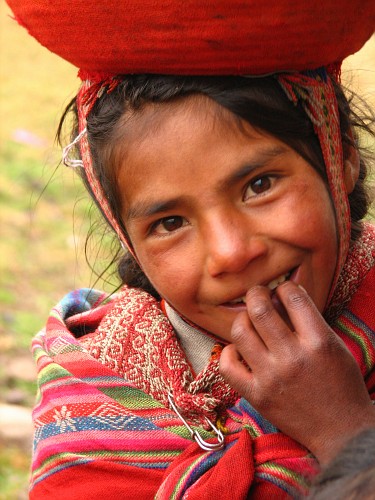
The teachers urge the children forward and, with this encouragement, one of the young girls approaches me. When I kneel down to her eye level, she hands me the flower with one hand, pours confetti on my head with the other, grins, gives me a quick hug and runs, giggling all the way, back to her group. Low to the ground, I approach her group and whisper the question as to if anyone speaks Spanish. They all just bat their huge black lashes and giggle. I’m sad that I’ve forgotten my Quechua phrasebook at home, but will learn later that while these girls don’t speak Spanish, their older sisters do; Spanish being reserved for late primary school.
As the children continue with the rituals of their reception, and our initiation, to their village, I decide it to be the sweetest gesture of the Quelqanqa community; sending in the most precious of their possessions in life, to make offerings of welcome and greet us as their guests.
